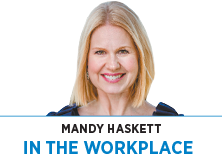Subscriber Benefit
As a subscriber you can listen to articles at work, in the car, or while you work out. Subscribe Now Working as a brand strategist for several years, my role was dedicated to not only helping brands map out their strategy, but also teaching them what a strategy is, what it’s not, and why it matters so much.
Working as a brand strategist for several years, my role was dedicated to not only helping brands map out their strategy, but also teaching them what a strategy is, what it’s not, and why it matters so much.
I’d have to explain how a strategy is an informed plan of action intended to meet a specific objective, usually having to do with broadening the scope of the brand’s advantage. In my recent work, however, I continually see something missing.
The way we strategists have been collecting information—mining qualitative and quantitative consumer and competitor data, market trends, ethnography and big media ecosystem data—often leaves out a component critical to the predictability of the results: the team.
Standing between every great strategy and its results are the people who will execute the plan. And yet, so many strategies fail to include any objective data about the human beings delivering the product or service.
How do you know that the people who will execute the tactics required for success are in the right roles? How do you know that the leaders who will coach them have the skills to engage and develop these individuals? How can you predict the speed with which your team will connect knowing to doing?
The “people” part of your strategy is more critical than ever. Here’s why:
Unprecedented workplace dynamics. We have 10,000 boomers turning 65 every day. Millennials occupy more than half the workforce but are not quite ready to step into leadership roles. Five generations are working side-by-side. And we have a full labor market. This is what experts are calling a perfect storm. The shifting workplace landscape requires a talent-optimization strategy. And at the core of talent optimization is the collection, analysis and application of people data.
Execution trumps ideas. The proliferation of content means ideas (the blood and bone of good branding) can come from anywhere. You have $5? Congratulations, you can buy yourself a creative concept from any one of the growing independent contractor marketplaces. The fastest to execute on these ideas wins. And people will make or break the execution. Brand positioning is still important. Ensuring you have the right people to deliver on your brand promise is, too. This transcends industry. No matter what you sell, you probably have people working toward your results.
Employee engagement still matters. “Engagement” might have been 2017’s buzzword, but new data ADVISA collected through its proprietary Dialogic tool (which measures organizational engagement) shows that “job fit” alone accounts for about 59 percent of the variance between high- and low-engagement work cultures. This means all the ping-pong tables in the world won’t be enough to keep people working in roles that don’t align with their own inherent motivating needs.
Because organizations with super-high engagement have four times the success of low-engagement organizations, job fit becomes one of the most critical predictors of your organization’s ability to get results.
Now more than ever, we have to rely on objective data about people and jobs to help inform our strategies. Sun Tsu, an ancient Chinese military strategist, said, “Strategy without tactics is the slowest route to victory; tactics without strategy is the noise before defeat.” If your plan includes objective data about the people executing those tactics, you already have a competitive advantage.
Here’s how you can tackle the people part of your strategy:
◗ Determine first what you want your desired results to be. As Heather Haas says, “Desired is a key word. For executive teams and organizations who are serious about getting where they want to go in the best, most profitable way, talent optimization is everything.”
◗ Collect people data. Not all assessments are created equal. Select a scientifically valid tool that predicts job performance independent of knowledge and skills, like the Predictive Index. Ensure it’s a tool that you can use pre- and post-hire (according to EEOC guidelines) throughout the life cycle of the employee.
◗ Collect job data using a job assessment tool. Every job has a personality. Investigate for fits and gaps. Where are your team members’ personalities aligned or misaligned with the personalities of the roles? What correlations do you see to performance?
◗ Partner with a talent-optimization specialist to apply the assessment data to your objectives. The value in an assessment is in its application—data is meaningless without insight. Learn what your people and job data say about where you are now, and how to leverage that insight to build the team you need to get where you’re going.•
__________
Haskett is a leadership consultant at Advisa, a Carmel-based leadership consultancy.
Please enable JavaScript to view this content.
